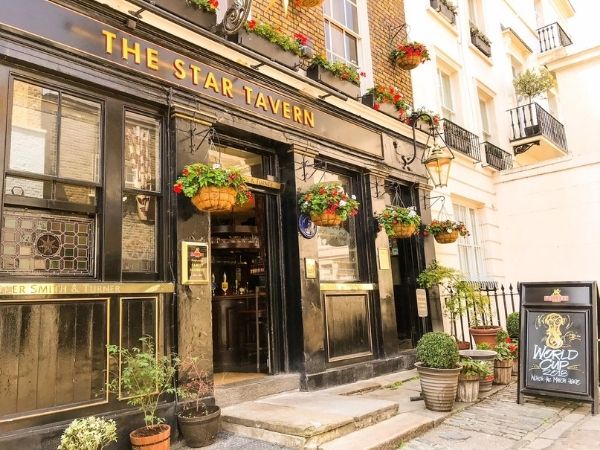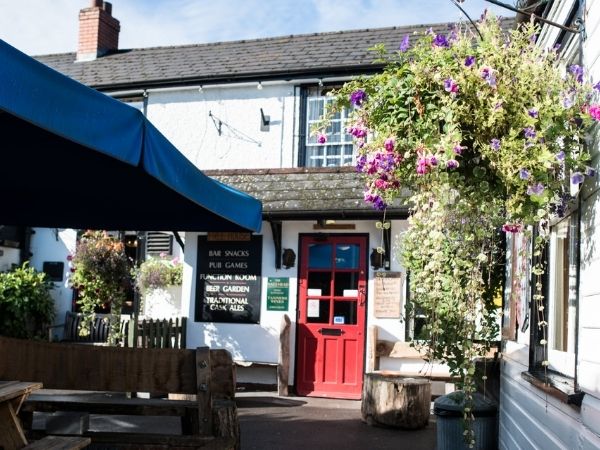Where to Drink
The 7 historical pubs you must visit in London
On this page find out about 7 historical pubs to visit in London
As the Great British Beer Festival begins in London, we unveil our list of the best historic pubs in the heart of the city. Before Shakespeare, some were around; some are more recent Victorian additions, but all have a fascinating history behind them.

The Star Tavern in Belgravia has seen its share of well-heeled guests – including Peter O'Toole, Diana Dors and Alexander Korda – since it was built in the early 19th century. However, it is most noted for its involvement in one of the most colorful – and infamous – episodes in England in the 20th century.
The grand upstairs room was apparently where the Great Train Robbers had their plans to target the Postal Service in 1963. Bruce Reynolds, the ringleader, is alleged to have been driving up from south-west London to Aston Martin to fill the details of the heist of £2.3 m. It's a pleasant, friendly place with a decent range of Fuller's beers.

This fabulous, poky little pub is only a short distance from the shopping district of Harrods and Knightsbridge, but it's a totally different environment. It just makes you feel like a discovery, with its position down a quiet little mews. Once you're stooping inside, you'll find a cluttered collection of portraits, brick-a-brac, pewter mugs, and curiosities, and Adnams on tap. That's where you come to get a glimpse of the public house as it was centuries ago – and woe to the person who violates the ban on cell phones. Because of the old school design of the platform, there does not seem to be an official website.

Constructed in 1720, the Grenadier was initially used as an officer in the Foot Guards regiment. It became a pub in 1818, and it is rumored that the Duke of Wellington used to stop in for refreshments. Some still claim it is haunted by the ghost of a retired soldier who was killed after cheating in a card game.
In recent years, Madonna has opted to come here for a post-game celebration, and the cozy interior of the pub remains the haunt of many socialites looking for a typical English pint and pub lunch.

The Soho institution played a strong historical role, although, as the name implies, its presence was felt more on the other side of the Channel. Ironically, the first known landlord was a German man, Herr Schmidt, but he was exiled after the outbreak of the First World War.
During the Second World War, the bar was used as a meeting spot for members of the French Resistance, including General de Gaulle. Later, his bohemian clientele included journalist Jeffrey Bernard and Madness's Suggs.
Today, the pub maintains a distinctly gallic taste, serving alcohol in French measures. Traditionalists should approve the lack of television and the ban on cell phones.

This is another well-known Soho watering hole with wonderful literary connections, the Dog and the Duck, where George Orwell used to drink. It has an ornate Victorian interior – the pub is Grade II-listed and well-known for its luxurious tiles and grand mirrors.
In his previous iteration on the same site (the new pub was built in 1897), John Constable and Dante Gabriel Rossetti were obviously regulars, and the owners boast a visit from Madonna: evidently, the singer has a fine taste in traditional English pubs.

One of the most distinctive locations in Covent Garden also noted for its striking foliage around its façade. It's a long way from the all-too-common homogenous pub chain, with a wonderful clutter of ornaments and memorabilia – even a napkin claimed to have been signed by Elvis. It's a defiantly traditional pub that continues to be used by locals.

This has a strong reputation as the most historic watering hole in Covent Garden and retains much of its traditional charm. Tucked down the alley – once known as the site of bare-knuckle fighting – this is a hugely popular pub, where drinkers included Dickens and the 17th-century poet John Dryden. In fact, the latter was obviously the victim of attempted murder in the vicinity. By way of consolation, the upstairs room is named after him. You will find that you need to make your way up the narrow wooden stairs to avoid the crowds at the bottom. The pub also puts on entertainment and is decorated with bunting on St. George's Day.
Header Image Credit: The Star Tavern
















